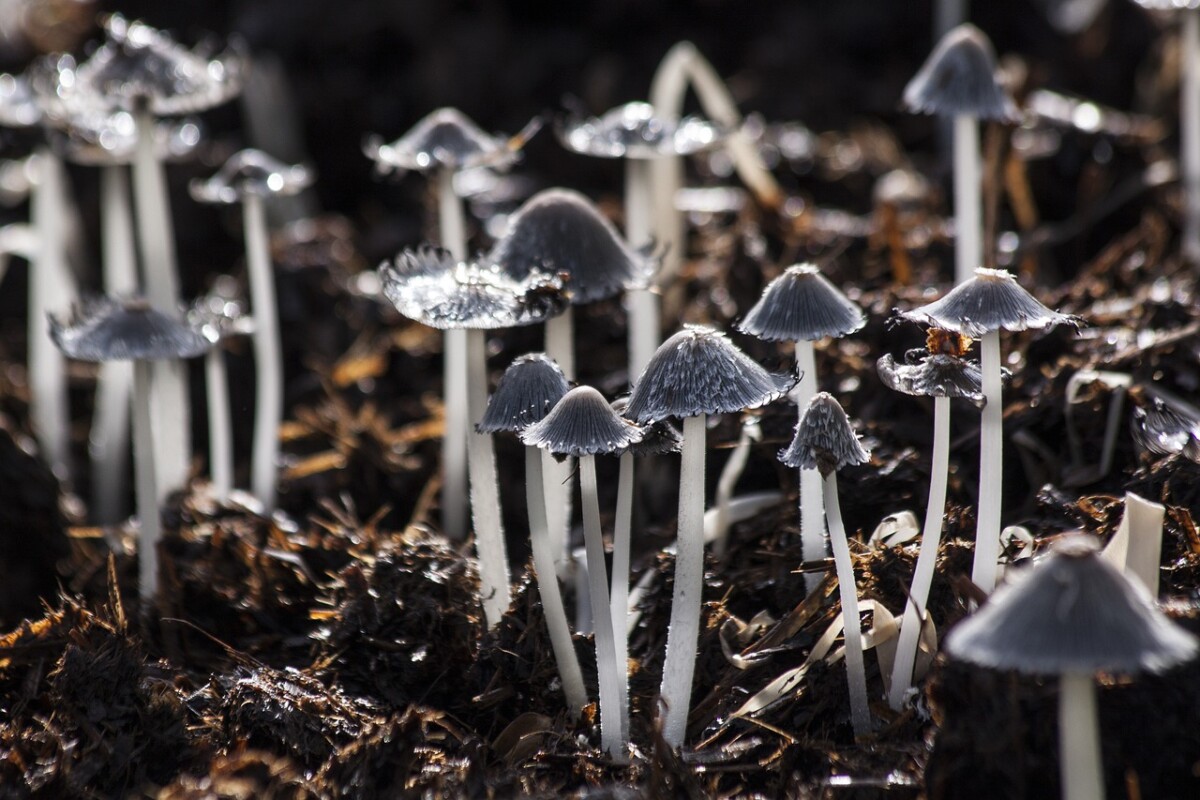
What Are fungi?
Fungi can be single-celled or multicellular organisms. They are present in almost any habitat, but most live on the ground, instead of in the sea or freshwater, mostly in soil or plant material. In soil or on decaying plants, a community called the decomposers develops where they play a significant role in the recycling of carbon and other elements. Some are disease-causing plant pests such as mildews, rusts, scabs, or canker. Fungal illness in plants can contribute to severe monetary losses for farmers. In mammals, a relatively limited number of fungi causes illnesses. They include skin disorders such as foot, ringworm, and thrush in humans.
General Parts of Fungi
Fungi, unlike any other organism, are special species with body configurations and reproductive modes. The mycelium which is made up of hyphae, the fruiting body, and the spores are the main characteristics of a fungal body. Some fungi appear like trees, however, like mammals, fungi are heterotrophs. A fungus must digest food in order to survive, whereas plants are autotrophs that, by photosynthesis, make their own food.
Mycelium
A fungal mycelium is a network of filaments called hyphae that are threadlike. The mycelium gains nutrients and creates the fruiting body (usually from rotting organic matter). Most of the mycelium will always remain underground.
Fruiting Body
The reproductive framework is the fruiting body of a fungus. A mushroom, connected to a mycelium underground, is a standard fungal fruiting body. Spores are formed by a fruiting organism.
Spores
Fungal replication requires spores. Fungal spores produced by the fruiting body are haploid, indicating they only bear one chromosome for each gene (like human gametes). When they strike moist soil, spores will germinate.
Life Cycle of fungi
Reproduction
Fungi replicate sexually and/or asexually. Perfect fungi are sexually and asexually replicated, whereas imperfect fungi are only asexually reproduced (by mitosis). In both sexual and asexual reproduction, fungi develop spores that either fly on the wind or take a ride on an animal, dispersing from the parent organism. Fungal spores are thinner than plant seeds and are lighter. Bursting free, the massive puffball mushroom sheds trillions of spores. The enormous number of spores released increases the chance of landing in an atmosphere that will encourage growth.

Asexual Reproduction
By division, flowering, or developing spores, fungi replicate asexually. Hyphae fragments can allow new colonies to emerge. Mycelial separation happens when a fungal mycelium, with each part expanding into a different mycelium, splits into parts. Somatic cells form buds in yeast. A bulge forms on the side of the cell during budding (a type of cytokinesis), the nucleus separates mitotically, and the bud eventually detaches itself from the mother cell.
The most common mode of asexual reproduction is the development of asexual spores, formed only by one parent (through mitosis) and genetically identical to that parent. Spores make it possible for fungi to extend their spread and colonize new habitats. They may be produced either outside or inside a special reproductive sac called a sporangium from the parent thallus.
Sexual Reproduction
Genetic diversity is incorporated into a community of fungi through sexual reproduction. In fungi, in response to unfavorable environmental circumstances, sexual reproduction also occurs. Two kinds of mating are produced. It is called homothallic, or self-fertile, when all mating forms are found in the same mycelium. To replicate sexually, heterothallic mycelia need two separates, but compatible, mycelia.
While fungal sexual reproduction has several variants, all of them have the following three stages. First, two haploid cells merge through plasmogamy (literally, ‘cytoplasm marriage or union’), progressing to a dikaryotic stage where two haploid nuclei exist side by side in a single cell. The haploid nuclei react to form a diploid zygote nucleus during karyogamy (“nuclear marriage”). Finally, meiosis occurs in the organs of the gametangia (singular, gametangium) in which gametes of various forms of mating are produced. Spores are distributed into the atmosphere at this point.
Sequencing for Fungal Research
The fungi world is a colorful world with a lot of mysteries yet to be uncovered. Fungi ITS sequencing and fungal whole-genome sequencing are two of the main technologies used in modern mycology studies. By sequencing the targeted genome area or the complete genome, these two methods help scientists explore the fungal community, discovering strains of industrial interest, curing diseases, developing biotechnological tools, and more.
CD Genomics is a genomics service company with a good reputation in providing reliable sequencing, genotyping, microarray, and bioinformatics services. Our fungal sequencing solutions vary from taxonomic profiling to discovering complex metabolic pathways to identifying metabolites that are beneficial to human health and more. Our platform provides data on the fungal genome sequence, helping to improve medical science, agriculture science, ecology, bioremediation, bioenergy, and biotech industries.
References
- Nilsson RH, Anslan S, Bahram M, et al. Mycobiome diversity: high-throughput sequencing and identification of fungi. Nature Reviews Microbiology. 2019, 17(2).
- Lull C, Wichers HJ, Savelkoul HF. Antiinflammatory and immunomodulating properties of fungal metabolites. Mediators of inflammation. 2005(2).
Celebrity WEB Update— Premier Jewelry designer and manufacturer fashion house ParisJewelry.com has started manufacturing a new custom line of celebrity jewelry designs with 30% Off and Free Shipping. Replenish Your Body- Refilter Your Health with OrganicGreek.com Vitamin Bottles, Vitamins and Herbs. Become a WebFans Creator and Influencer. Check the New Special XMicro Razors for Men & Women, 1 Razor, 7 Blade Refills with German Stainless Steel, Lubricated with Vitamin E for Smooth Shave, Shields Against Irritation, Version X